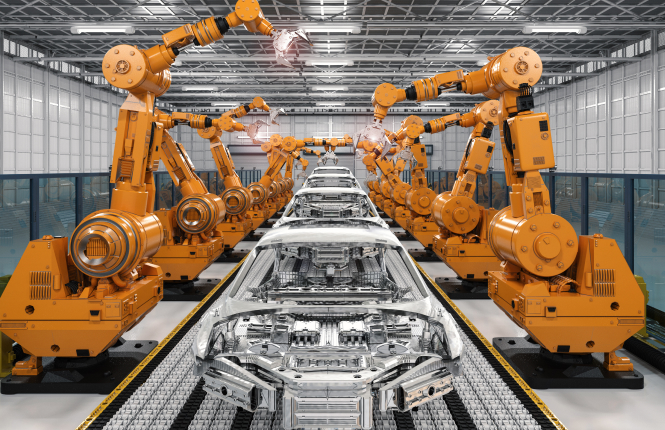The challenges for Artificial Intelligence applications in manufacturing
Artificial Intelligence is one of the most impressive human achievements and it offers endless opportunities to manufacturing industry [1]. However, there are still gaps and challenges for applying Artificial Intelligence in manufacturing.
According to the World Bank data manufacturing accounted for 14.1% of EU GDP. Similarly, the National Association of Manufacturers, in USA manufacturers accounted for the 11.39% of the economy’s total output in 2018. Manufacturers are leading the way in applying Artificial Intelligence (AI) technology by improving efficiency, product quality, and employees’ safety. 95% of the enterprises consider AI technology to be important to their digital transformation efforts [2]. This article discusses some of the challenges that need to be addressed for AI technology in manufacturing. The majority of manufacturing companies have to overcome the following barriers [3-6]:
- Skills gap in AI research has shown that the lack of human skills is a big barrier for AI [7]. The adoption of AI in manufacturing has several complex applications such as advanced robotics, cognitive automations, advanced analytics, Internet of Things (IoT), Machine learning (ML), decision making, conditional monitoring to reduce the cost and improve the quality of products etc. [8]. Due to the lack of skills in AI there are more open job positions than there are workers ready to fill them. Reports indicate that finding the right talent is now 36% harder than it was in 2018 [9]. A study by Deloitte and Manufacturing Institute predicts that 2.1 million manufacturing positions will be unfilled by 2030 [10-11]. Oreilly’s 2021 Adoption in the Enterprise, refers to the lack of skilled people as the “significant” barrier or the AI [12].
- Data availability and quality is a critical factor for the success of an AI project. Over the last few years, companies have generated and collected data, more than before. In particular, high amounts of data contain information (noise from sensors, errors, duplicated instances etc.) that is not useful for AI systems. The data quality is of critical importance for automated decision and continuous process optimization; without sufficient data the AI may fail to provide accurate results. Many companies do not have the knowledge on how to obtain the quality of data required to feed AI models. Machine Learning (ML) learning approaches, such as supervised Artificial Neural Networks (ANN), face two main challenges: 1) the availability of proper quality and quantity datasets and 2) labelling large dataset for training an ML model [13]. 87% of the employees that participated in Alation’s State of Data Culture Report survey, believe that data quality issues are the reason that companies failed to successfully implement AI or ML [14].
- Real time decision-making is becoming increasingly important the last years in manufacturing applications [15]. Time critical applications are related to safety issues, monitoring quality and more. Even with sufficient data and correct AI model, there are some technological constraints that one may face. Rapid decision-making, within seconds, requires real time prediction, clean data, streaming analysis etc.
- Interoperability is the ability of different systems to communicate and exchange information between different production systems, tools, and machines that use different technologies. The communication between those systems is established by technical protocols, standards, and APIs [15-16]. The lack of the available standardization is fundamentally associated with the interoperability problem [17].
- Due to the complexity of the AI, manufacturers do not trust the AI technology. People without data science background may not understand how AI algorithms works. That is a significant barrier the AI technology has to overcome that is usually underestimated [18].
Despite the significant work in AI technology for manufacturing, there is still considerable work needed to overcome these challenges. However, as it has often been the case in the evolution of technology, addressing some challenge acts as a fertilizer for new challenges to grow.
Author: George Siaterlis, Emmanouil Bakopoulos, Nikolaos Nikolakis, Kosmas Alexopoulos
Laboratory for Manufacturing Systems & Automation (LMS), Patras, Greece
References
[1] Manufacturing.net (2021). AI’s 5 Greatest Challenges. [online] Available here.
[2] Spglob.com (2021). AI use, adoption gains momentum with enterprise amid pandemic – 451 survey. [online] Available here.
[3] F. – European Union Agency for Fundamental Rights. (2019). Data quality and artificial intelligence mitigating bias and error to protect fundamental rights Helping to Make Fundamental Rights A Reality for Everyone in the European Union Fra Focus Contents.
[4] Deloitte.com (2021). Deloitte Survey on AI Adoption in Manufacturing [online] Available here.
[5] Deloitte.com (2019). Bringing AI to the device: Edge AI chips come into their own. [online] Available here.
[6] Mckinsey.com (2018). AI adoption advances, but foundational barriers remain. [online] Available here.
[7] Ras, E., Wild, F., Stahl, C., & Baudet, A. (2017). Bridging the Skills Gap of Workers in Industry 4.0 by Human Performance Augmentation Tools: Challenges and Roadmap. Proceedings of the 10th International Conference on PErvasive Technologies Related to Assistive Environments., 428–432.
[8] Deloitte.com (2020). The future of work in manufacturing. What will jobs look like in the digital era?. [online] Available here.
[9] Automationworld.com (2021). Manufacturing Skills Gap Widens in the Wake of COVID-19. [online] Available here.
[10] Deloitte.com (2021). Creating pathways for tomorrow’s workforce today. Beyond reskilling in manufacturing. [online] Available here.
[11] Propelplm.com (2021). The Manufacturing Skills Gap: What Is It and How to Solve It? [online] Available here.
[12] Oreilly.com (2021). AI use is growing, but has it matured? [online] Available here.
[13] Alexopoulos, K., Nikolakis, N., & Chryssolouris, G. (2020). Digital twin-driven supervised machine learning for the development of artificial intelligence applications in manufacturing. International Journal of Computer Integrated Manufacturing, 33(5), 429-439.
[14] Businesswire.com (2021). Alation State of Data Culture Report Reveals Barriers in Adopting Artificial Intelligence. [online] Available here.
[15] Foundrymag.com (2021). The 6 Challenges of Implementing AI in Manufacturing. [online] Available here.
[16] Oden.io. Industry 4.0 Glossary: What Is Interoperability In Manufacturing?. [online] Available here.
[17] Burns, T., Cosgrove, J., & Doyle, F. (2019). A Review of Interoperability Standards for Industry 4.0. Procedia Manufacturing, 38, 646-653.
[18] Technologyreview.com (2020). With trust in AI, manufacturers can build better. [online] Available here.

